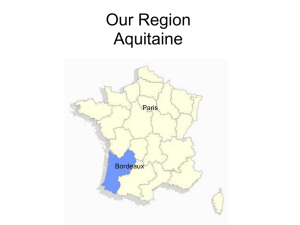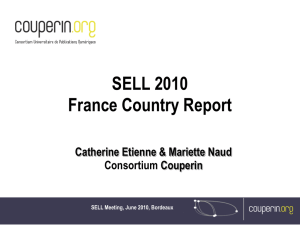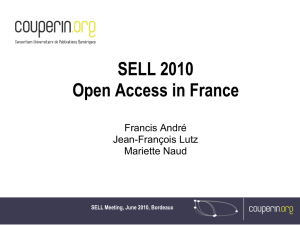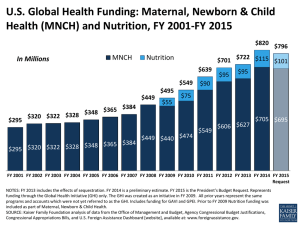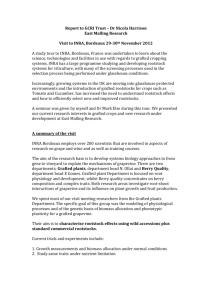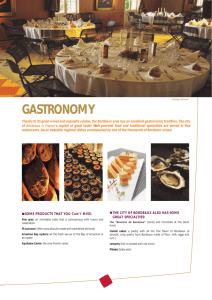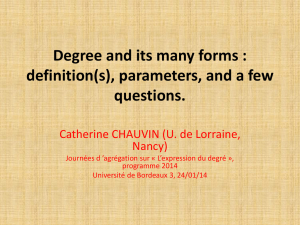Accounting & MIS 3300
advertisement
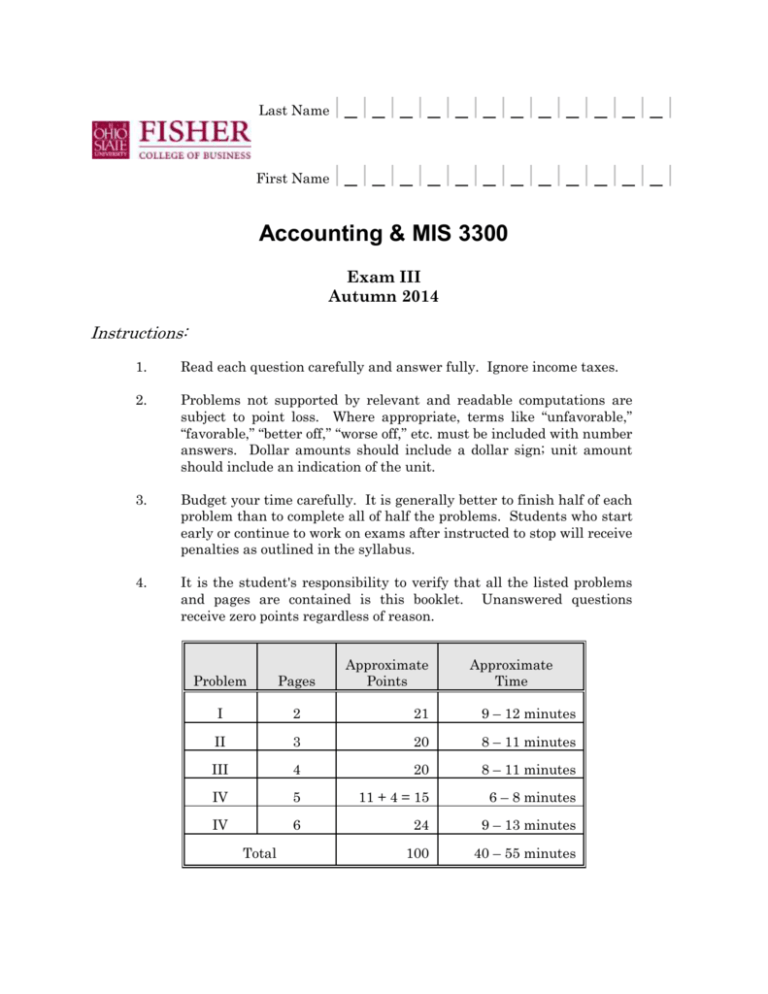
Last Name |_|_|_|_|_|_|_|_|_|_|_|_| First Name |_|_|_|_|_|_|_|_|_|_|_|_| Accounting & MIS 3300 Exam III Autumn 2014 Instructions: 1. Read each question carefully and answer fully. Ignore income taxes. 2. Problems not supported by relevant and readable computations are subject to point loss. Where appropriate, terms like “unfavorable,” “favorable,” “better off,” “worse off,” etc. must be included with number answers. Dollar amounts should include a dollar sign; unit amount should include an indication of the unit. 3. Budget your time carefully. It is generally better to finish half of each problem than to complete all of half the problems. Students who start early or continue to work on exams after instructed to stop will receive penalties as outlined in the syllabus. 4. It is the student's responsibility to verify that all the listed problems and pages are contained is this booklet. Unanswered questions receive zero points regardless of reason. Approximate Points Approximate Time Problem Pages I 2 21 9 – 12 minutes II 3 20 8 – 11 minutes III 4 20 8 – 11 minutes IV 5 11 + 4 = 15 6 – 8 minutes IV 6 24 9 – 13 minutes 100 40 – 55 minutes Total Page 2 of 6 PROBLEM I The Antibe Company has two support departments (Cleaning and Maintenance) and two production areas (Assembly and Finishing). The following is known: Actual Costs $ Services Furnished by Cleaning (Sq. footage) Maintenance (labor hrs.) Support Departments Cleaning Maintenance 75,600 $ 145,530 500 700 Operating Departments Assembly Finishing $ - $ 2,000 500 6,000 4,000 Total - 12,000 3,000 $ 221,130 20,500 8,200 Part A. Allocate the costs under the step-down method that produces an answer closest to the reciprocal method. Part B. Allocate the costs under the reciprocal method. Page 3 of 6 PROBLEM II Bordeaux sells one product at the same price per unit. In 20x1, the results were: Sales Units Sales CGS Gross Margin Operating Expenses Operating Income 135,000 $ 7,020,000 6,345,000 675,000 500,000 $ 175,000 Bordeaux believes that about 70% of Cost of Goods Sold and 100% of Operating Expenses are fixed. Bordeaux expects the results will be the same in 20x2 unless a special order is accepted. Each part is unique, built upon the above data. All special order offers are “take it or leave it.” Part A. Assume a special order for 25,000 units at $25 each is received. Bordeaux has capacity of 170,000 units. How much better or worse off will they be if they accept? Part B. Assume a special order for 25,000 units at $25 each is received. Bordeaux has capacity of 150,000 units. How much better or worse off will they be if they accept? Part C. Bordeaux is considering issuing 10,000 coupons that allow the holder to buy one unit at a 20% discount. The discounted units will not include a presentation box that cost the company $2 per unit. Bordeaux has capacity of 150,000 units. Bordeaux is concerned that some of the units sold as part of the promotion may replace units they would have sold at the regular price. What is the maximum percentage of the coupons exercised that can come from those who would have bought at the regular price without making Bordeaux worse off? Part D. Bordeaux is considering a special order for 25,000 units when they have capacity of 150,000. Because the customer is in Germany, Bordeaux would have to pay $100,000 to obtain a one-year export license and $5 more in manufacturing costs per unit to meet E.U. standards. What is the minimum price per unit Bordeaux is willing to accept from this customer? Page 4 of 6 PROBLEM III The Cannes Company is considering the purchase of a new machine to replace an old machine purchased 3 years ago for $245,000. The old machine has a 7-year useful life (4 years remain). The new machine has a 4-year useful life. Both machines are (or will be) depreciated on a straight-line basis with a zero salvage value (and they will be worth zero at the end of their useful life). The president is presented with the following income statement projecting results in the first year after buying the new machine: Revenues Operating Costs: To Operate Machine Depreciation Loss On Sale Loss $ 263,000 $ 100,000 75,000 $ 175,000 92,000 267,000 $ (4,000) The president is surprised, since the new machine has annual operating costs $115,000 less than the old, and the projected income statement for the old machine has a profit. Required: Present a professional quality table analyzing whether Cannes should keep the old or buy the new. Ignore time value of money issues (i.e., assume a zero interest rate). Page 5 of 6 PROBLEM IV Part A. The Dijon Company uses 34,500 units of the raw material X-B1 in their production department each month. The buy the entire month’s need once a month at $18 unit. Their supplier has offered to sell them the units at a 5% discount if the pay for one year’s worth of units in advance (net of the discount). The supplier will still deliver 34,500 each month over the twelve months. Dijon can borrow money at a 10% per annum interest rate. Simply the two chooses are: 1) pay for one year’s of units (net of discount) and receive 34,500 each month or 2) pay for and receive 34,500 once each month. Required: Calculate whether Dijon should continue to buy monthly or should buy a year’s worth, fully taking into account all costs and benefits described above. Part B. Assume the facts in Part A, except the supplier will deliver all 414,000 units needed annually at the beginning of the year instead of 34,500 each month. What else might you consider, and how might your answer change? Required: Provide a succinct but complete answer to the question above. Page 6 of 6 PROBLEM V The Evry Company produces three products, Abc, Def, and GHI, through a joint process costing $120,000. Evry uses the net realizable value method. Abc is processed further into ABC. Def is processed further into DEF. Abc and Def cannot be sold until further processing. During the first year of operations, the following took place: Kilos Product Produced ABC 700 DEF 1000 GHI 4000 Sales Price per Kilo $ 80 $ 125 $ 4 Separable Kilos Sold Costs 600 $ 20,000 750 $ 10,000 3500 $ - Part A. Assume that GHI is treated as a byproduct (production method). requested amounts below: Product Ending Inventory Balance ABC $ DEF $ GHI $ Fill in the Part B. Assume that GHI is treated as a byproduct (sales method). Fill in the requested amounts below: Product Ending Inventory Balance ABC $ DEF $ GHI $
